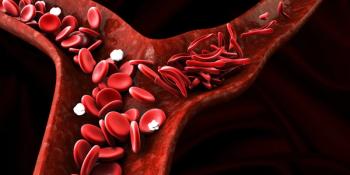
Multidrug Therapy and Unmet Needs for CINV
Bhavesh Shah, RPh, BCOP, and Katherine Lin, PharmD, BCOP, review the multidrug treatment approach and the unmet needs for chemotherapy-induced nausea and vomiting.
RELATED VIDEOS
- The Role of Pharmacists in Evaluating the CINV Therapy
- Patient Factors to Consider for the Therapy of CINV
Katherine Lin, PharmD, BCOP: I think the role for multidrug antiemetic therapy ties back to the pathophysiology of CINV [chemotherapy-induced nausea and vomiting]. We talked about before how there's lots of different neurotransmitters and lots of different pathways that are involved in the generation of the feeling of nausea and emesis. The role for multidrug antiemetic therapy really is that you are using agents from different classes that are targeting these different pivotal key neurotransmitters that are causing the nausea and vomiting. And by hitting this with different neurotransmitters and by different angles, I think we can achieve more optimal control for patients.
Bhavesh Shah, RPh, BCOP: I think the complication that we also have is you have this therapy on multiple days, right? We're used to prophylaxing them on day 1, but every day is a day 1, right? That's definitely a challenge from my perspective, and this is where a lot of providers get stuck too, in terms of how we manage patients for prophylactic measures. When does day 1 start really and when does day 3? When you have regimens like BEP [bleomycin, etoposide, cisplatin] where you're giving cisplatin-etoposide for 5 days, it's definitely challenging in a patient who is in their 20s or 30s. That multiday regimen—I feel like we still haven't figured out. But as you said, try to target the different pathophysiology and making sure you're hitting all the receptors that you need to and be more aggressive in managing that.
Katherine Lin, PharmD, BCOP: Well, if you look at the guidelines, they do provide appropriate guidance through there. But really, they aren't designed for looking at multiday chemotherapy. They look at single-day chemotherapy. You can apply what the guidelines are telling you. But as you said, we know that CINV can be additive, and 1 + 1 doesn't always equal 2. There really is a lack of evidence supporting what we should be doing for these multiday chemotherapy regimens.
Bhavesh Shah, RPh, BCOP: If you look at the guidelines, there's really not. I think it says "under construction" maybe.
Katherine Lin, PharmD, BCOP: Yes.
Bhavesh Shah, RPh, BCOP: That ties in to the unmet needs. We can probably say that multiday prophylaxis is probably one of the unmet needs in CINV. Any other unmet needs you can think of in CINV?
Katherine Lin, PharmD, BCOP: Well, Bhavesh, it's so funny. You had actually mentioned my biggest unmet need. We have a lot of really good guidelines to talk about how to manage CINV with single agents in cycles like every 2 weeks, every 3 weeks. But now we have a lot of oral anticancer agents coming onto the market, and these are things that patients are taking daily or twice a day indefinitely until progression or unacceptable toxicity. As you had said before, some of these classes really do have a lot of nausea and vomiting tied into them. How do we manage that? Do we give them a daily 5-HT3? Do we give them twice-daily 5-HT3 or other agents that we've used? Dexamethasone is probably not a good choice for long-term management of CINV with the adverse effects that come along with that. The NK-1 receptor antagonists—there are really no data showing long-term use and continuous use of the NK-1s. Maybe olanzapine is the answer to this, but we just don't know. I feel there's a definite lack of knowledge in this area, and this is where we need to focus some research at this point.
Bhavesh Shah, RPh, BCOP: Absolutely agreed. One of the other things I can think of is having more structure in prescribing. We have so many options. I don't think providers really know which ones they should be prescribing. Which NK-1 receptor should I be prescribing? Should I be prescribing the combination drug? Should I be prescribing rolapitant? Should I be prescribing fosaprepitant or aprepitant? Which 5-HT3 should I be prescribing?
When you have NCCN [National Comprehensive Cancer Network Guidelines], which actually have 3 different recommendations for a highly emetogenic chemotherapy regimen, and then a lot of times providers can actually customize it to their patient. I think there's a lot of variability in prescribing—which causes a disconnect in terms of standardization, where we actually should have a very structured approach in managing a disease or an adverse effect that's been there for years and years.
The other aspect is access. We do have a lot of branded drugs, which may have a lot of co-pays for patients, especially Medicare patients who may have issues with accessing the medications. There's also that financial barrier that can also cause that unmet need in CINV, where we have agents that are less costly but also those agents that are high costly, and obviously they almost do the same thing.
I want to talk about an oral paclitaxel formulation that was presented at San Antonio Breast Cancer Symposium. The way it's formulated, it doesn't actually work the same way as IV [intravenous] paclitaxel. And you have a significantly lower peripheral neuropathy associated with it.
I didn't know if there's anything else that you wanted to add to that, but I thought that was pretty exciting in breast cancer, where we know that one of the reasons we see patients coming off therapy is peripheral neuropathy. We have something exciting available for patients with breast cancer who might be experiencing chemotherapy-induced nausea and vomiting, and then they have peripheral neuropathy on top of that. It's interesting, and I just wanted to throw that in there.
Katherine Lin, PharmD, BCOP: I think it's wonderful. We know that a lot of times the paclitaxel is used in curative regimens, and the intent here is curative. How do you manage peripheral neuropathy? You dose reduce. This is definitely a very exciting development, and I think it has a lot of very positive and exciting implications for how we're going to go forward in managing these patients.
Bhavesh Shah, RPh, BCOP: This was great. Thank you for joining us. On behalf of myself and Dr. Katherine Lin, we hope you find this Pharmacy Times® Peers and Perspectives® discussion useful and informative.
Newsletter
Stay informed on drug updates, treatment guidelines, and pharmacy practice trends—subscribe to Pharmacy Times for weekly clinical insights.





















































































































































































































